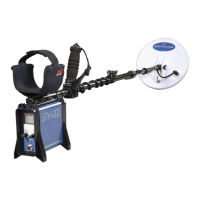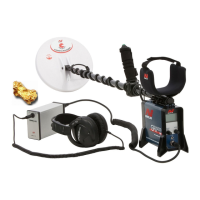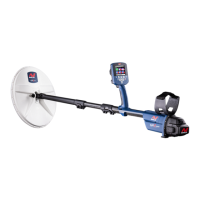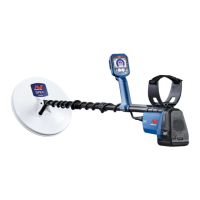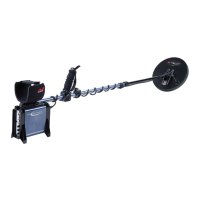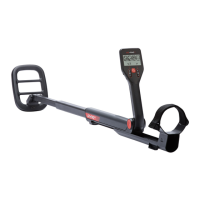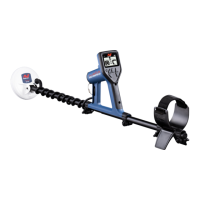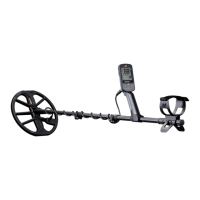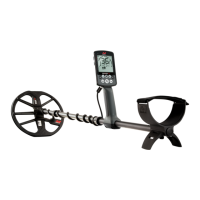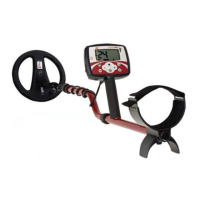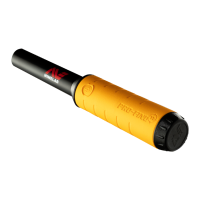16
CONTENTS
Quick-Trak Ground Balance Procedure
Follow the Quick-Trak Ground Balance procedure to quickly recalibrate the detector to
the new ground.
GPX 6000™ tracks automatically to changing ground conditions during normal use. It is effective for typical detecting in
most grounds. There will be times when the automatic ground tracking will not be able to track fast enough, such as when
moving to a different type of ground. In these situations, a Quick-Trak Ground Balance will quickly recalibrate the detector to
the new ground.
START `
1. Press and hold the
Quick-Trak button.
Press and hold the Quick-Trak button — it must remain pressed
throughout the Quick-Trak procedure.
2. Raise and lower the coil.
Raise and lower the coil between 10 to 100 mm (⁄ to 4 in)
above the ground to expose the coil to the full range of the
ground — try to lower the coil as close and parallel to the ground
as possible without hitting the ground.
3. Swing the coil from side-to-side.
Swing the coil from side-to-side once the ground noise has
significantly reduced. This will capture any remaining ground
signals for a thorough ground balance.
4. Release the Quick-Trak button.
Once the ground noise is at a comfortable level or will not reduce
any further, release the Quick-Trak button.
`If there is still noise when the coil is passed over the ground, follow the Ground Balance Procedure (page 17).
In some cases, try detecting on a nearby location in case the noise is being caused by a target / metal object. Try
performing Quick-Trak over a new patch of ground.
Auto and Quick-Trak Guide
Auto Quick-Trak
` Ideal for both new and experienced users.
` Tracks successfully to most ground conditions.
` Detector continuously tracks ground during detecting, but
Quick-Trak may still be used to rebalance to changing or
variable ground conditions.
` Ground balances more slowly than Quick-Trak.
` Quick-Trak is a manually initiated Ground Balance process for
faster ground balancing than Auto.
` Use to ground balance to a chosen area of ground,
e.g. patches of extreme mineralisation, hot rocks etc.
` Use in between digging and checking for a target, so that the
target is not ‘balanced out’ accidentally.
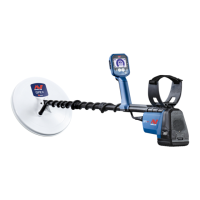
